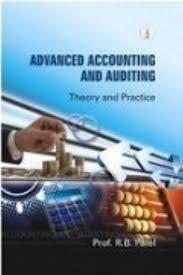Orie and Jane, husband and wife, operate a sole proprietorship. They expect their taxable income next year to be $300,000, of which $125,000 is attributed

 Orie and Jane, husband and wife, operate a sole proprietorship. They expect their taxable income next year to be $300,000, of which $125,000 is attributed to the sole proprietorship. Orie and Jane are contemplating incorporating their sole proprietorship. (Use the tax rate schedule and corporate income tax brackets). a. Using the married-joint tax brackets and the corporate tax brackets, find out how much current tax this strategy could save Orie and Jane. Current tax saved? b. How much income should be left in the corporation? Answer for this question is Income left $75000
Orie and Jane, husband and wife, operate a sole proprietorship. They expect their taxable income next year to be $300,000, of which $125,000 is attributed to the sole proprietorship. Orie and Jane are contemplating incorporating their sole proprietorship. (Use the tax rate schedule and corporate income tax brackets). a. Using the married-joint tax brackets and the corporate tax brackets, find out how much current tax this strategy could save Orie and Jane. Current tax saved? b. How much income should be left in the corporation? Answer for this question is Income left $75000
2016 Federal Tax Rate Schedule Schedule X-Single Schedule Z-Head of Household If taxable income is over If taxable income is over But not over $ 13,250 $ 50,400 But not over The tax iS: The tax is 10% of taxable income $92750 plus 15% of the excess over $9,275 $5,183.75 plus 25% of the excess over $37650 $18,558.75 plus 28% of the excess over $91,150 $46,278.75 plus 33% of the excess over $190,150 $119,934.75 plus 35% of the excess over $413,350 $120,529.75 plus 39.6% of the excess over $415,050 10% of taxable income $1,325.00 plus 15% of the excess over $13,250 $6,89750 plus 25% of the excess over $50,400 $26,835.00 plus 28% of the excess over $130,150 $49,41700 plus 33% of the excess over $210,800 $116,258.50 plus 35% of the excess over $413,350 $125,936.00 plus 39.6% of the excess over $441,000 0 $ 9,275 0 9,275 37,650 $ 91,150 $190,150 $413,350 $415,050 $ 37650 $ 91,150 $190,150 $413,350 $415,050 $ 13,250 $ 50,400 $130,150 $210,800 $413,350 $441,000 $ $130,150 $210,800 $413,350 $441,000 $ Schedule Y-1-Married Filing Jointly of Qualifying Widow(er) Schedule Y-2-Married Filing Separately If taxable income is over: But not If taxable income is over The tax is But not over $ 18,550 over The tax iS: 10% of taxable income $92750 plus 15% of the excess over $9,275 $5,183.75 plus 25% of the excess over $37650 $14,758.75 plus 28% of the excess over $75,950 $25,895.75 plus 33% of the excess over $115,725 $55,909.25 plus 35% of the excess over $206,675 $65,289.25 plus 39.6% of the excess over $233,475 0 $ 9,2 75 10% of taxable income $1,855.00 plus 15% of the excess over $18,550 $10,36750 plus 25% of the excess over $75,300 $29,51750 plus 28% of the excess over $151,900 $51,791.50 plus 33% of the excess over $231,450 $111,818.50 plus 35% of the excess over $413,350 $130,578.50 plus 39.6% of the excess over $466,950 $ $ 37,650 $75,950 $115,725 9,275 $ 37650 $75,950 $115,725 $206,675 $233,475 0 $ 18,550 $ 75,300 $151,900 $231,450 $413,350 $466,950 75,300 $151,900 $231,450 $413,350 $466,950 $206,675 $233,475

 Orie and Jane, husband and wife, operate a sole proprietorship. They expect their taxable income next year to be $300,000, of which $125,000 is attributed to the sole proprietorship. Orie and Jane are contemplating incorporating their sole proprietorship. (Use the tax rate schedule and corporate income tax brackets). a. Using the married-joint tax brackets and the corporate tax brackets, find out how much current tax this strategy could save Orie and Jane. Current tax saved? b. How much income should be left in the corporation? Answer for this question is Income left $75000
Orie and Jane, husband and wife, operate a sole proprietorship. They expect their taxable income next year to be $300,000, of which $125,000 is attributed to the sole proprietorship. Orie and Jane are contemplating incorporating their sole proprietorship. (Use the tax rate schedule and corporate income tax brackets). a. Using the married-joint tax brackets and the corporate tax brackets, find out how much current tax this strategy could save Orie and Jane. Current tax saved? b. How much income should be left in the corporation? Answer for this question is Income left $75000





